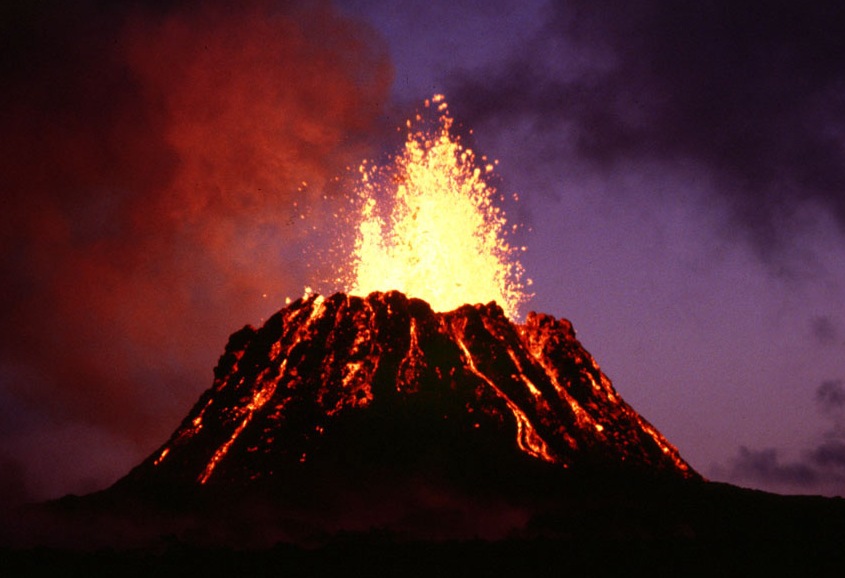
Hawaii’s Kilauea Volcano has been erupting, dangerously. But it is always in some form of activity, as one of the world’s most active volcanos, and is therefore heavily instrumented. Volcanic prediction is feasible, according to Paul Segall, professor of geophysics at Stanford University; whereas earthquakes, caused by similar disturbances below Earth’s surface, are less predictable. Volcanos may become an important factor in mitigating climate change. Here’s why:
Iceland is the site of CarbFix, exploring the future of carbon capture. When CO2 is extracted from the atmosphere, at a plant near Reykjavik’s Hellisheidi power station, it is pumped underground to combine with basalt. As a result, the combination becomes rock. In fact, the ancient Romans used volcanic ash to form a particular building material. Basalt contains calcium, magnesium, and iron – elements that bind easily with CO2; basalt is like a sponge for CO2. Could this be answer to Earth’s carbon crisis? Maybe – basalt is the most common rock type on the planet; it’s even found on the ocean floors. India, Saudi Arabia, and Siberia are particularly well-endowed. Problem? CarbFix is water-intensive, not ideal for the already thirsty water planet. It takes 25 tons of water to transform one ton of CO2. Humans cause the emission of 35 gigatons of CO2 (a gigaton is a billion tons) per year. But the potential encourages research by CarbFix partners including Columbia University in New York, National Center for Scientific Research in France, and Reykjavik Energy in Iceland. Theoretically, the amount of world basalt could store all the CO2 emissions caused by burning fossil fuels, since Prometheus.
Kilauea is a basaltic shield volcano, producing an eruptive form of basalt called Tholeiite, according to Ken Rubin, professor of geology and geophysics, University of Hawaii. It’s the dominant basalt type on Earth. In the future, we may learn to work with volcanic basalt to combat CO2 emissions and build a better climate. Meanwhile, if you would like to give support to those in need, due to Kilauea’s recent eruption, here are some ways to help.
For more:
Ancheta, Dillon. “Here’s how to help those affected by the Big Island eruptions.” 5 May, updated 22 May, 2018. Hawaii News Now. http://www.hawaiinewsnowcom/story/38119223/heres-how-you-can-donate-to-those-impacted-by-the-kilauea-eruption/.
Brooke, Kathleen Lusk. “Philosopher’s Stone?” 17 June 2018, Building the World Blog. https://blogs.umb.edu/buildingtheworld/2016/06/17/philosophers-stone/
CarbFix. https://www.or.is/carbfix
Perasso, Valeria. “Turning carbon dioxide into rock – forever.” 18 May 2018. BBC News. www.bbc.com/news/world-43789527/.
Building the World Blog by Kathleen Lusk Brooke and Zoe G Quinn is licensed under a Creative Commons Attribution-NonCommercial-NoDerivs 3.0 Unported License
